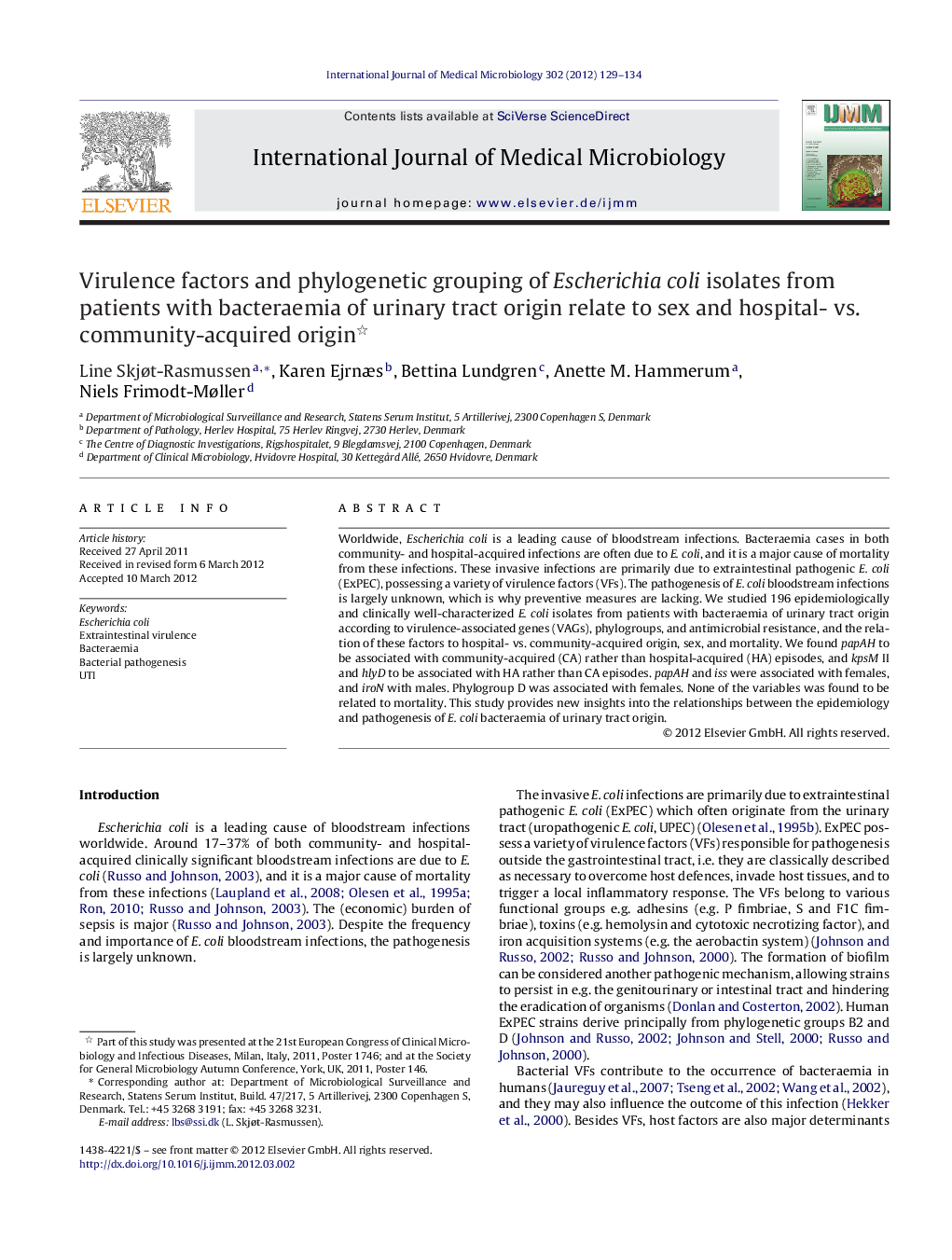| Article ID | Journal | Published Year | Pages | File Type |
|---|---|---|---|---|
| 2054846 | International Journal of Medical Microbiology | 2012 | 6 Pages |
Worldwide, Escherichia coli is a leading cause of bloodstream infections. Bacteraemia cases in both community- and hospital-acquired infections are often due to E. coli, and it is a major cause of mortality from these infections. These invasive infections are primarily due to extraintestinal pathogenic E. coli (ExPEC), possessing a variety of virulence factors (VFs). The pathogenesis of E. coli bloodstream infections is largely unknown, which is why preventive measures are lacking. We studied 196 epidemiologically and clinically well-characterized E. coli isolates from patients with bacteraemia of urinary tract origin according to virulence-associated genes (VAGs), phylogroups, and antimicrobial resistance, and the relation of these factors to hospital- vs. community-acquired origin, sex, and mortality. We found papAH to be associated with community-acquired (CA) rather than hospital-acquired (HA) episodes, and kpsM II and hlyD to be associated with HA rather than CA episodes. papAH and iss were associated with females, and iroN with males. Phylogroup D was associated with females. None of the variables was found to be related to mortality. This study provides new insights into the relationships between the epidemiology and pathogenesis of E. coli bacteraemia of urinary tract origin.
